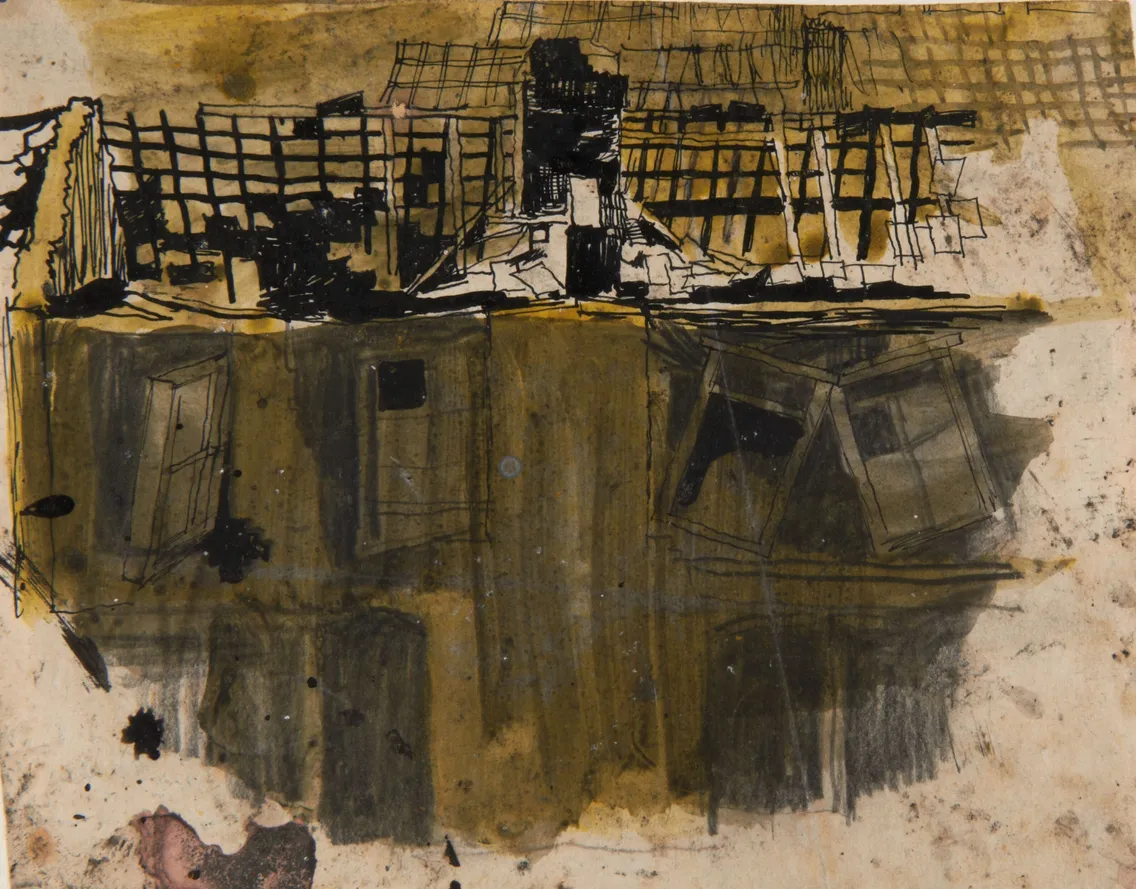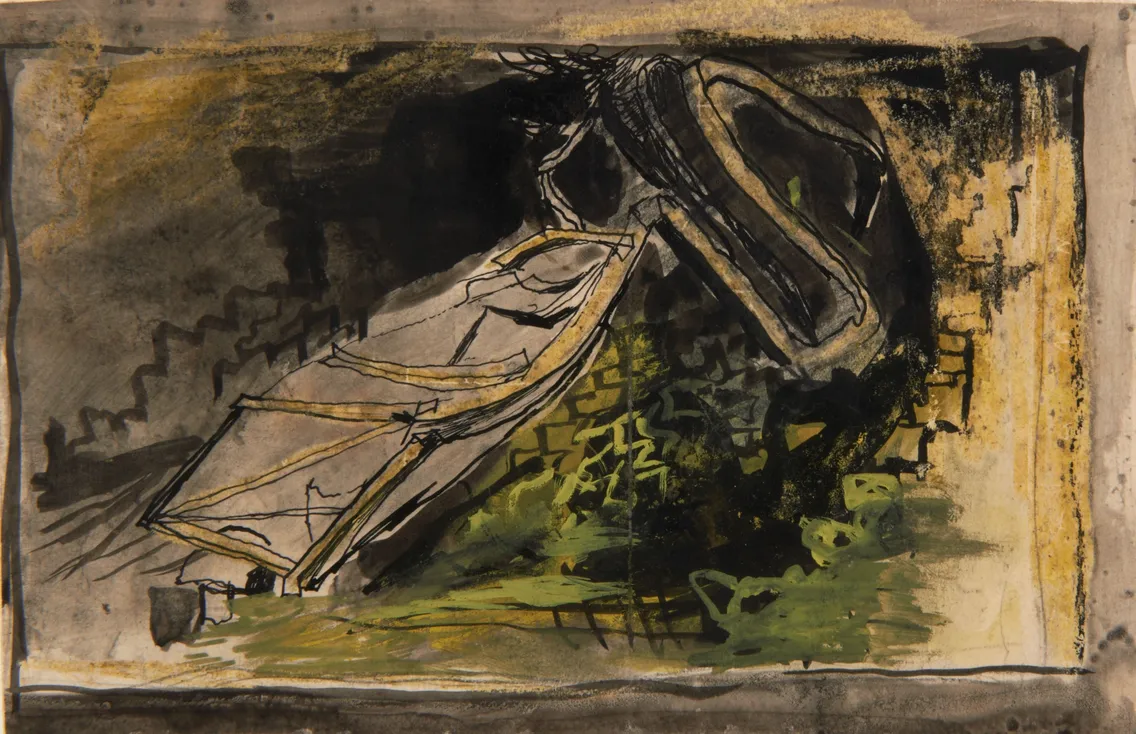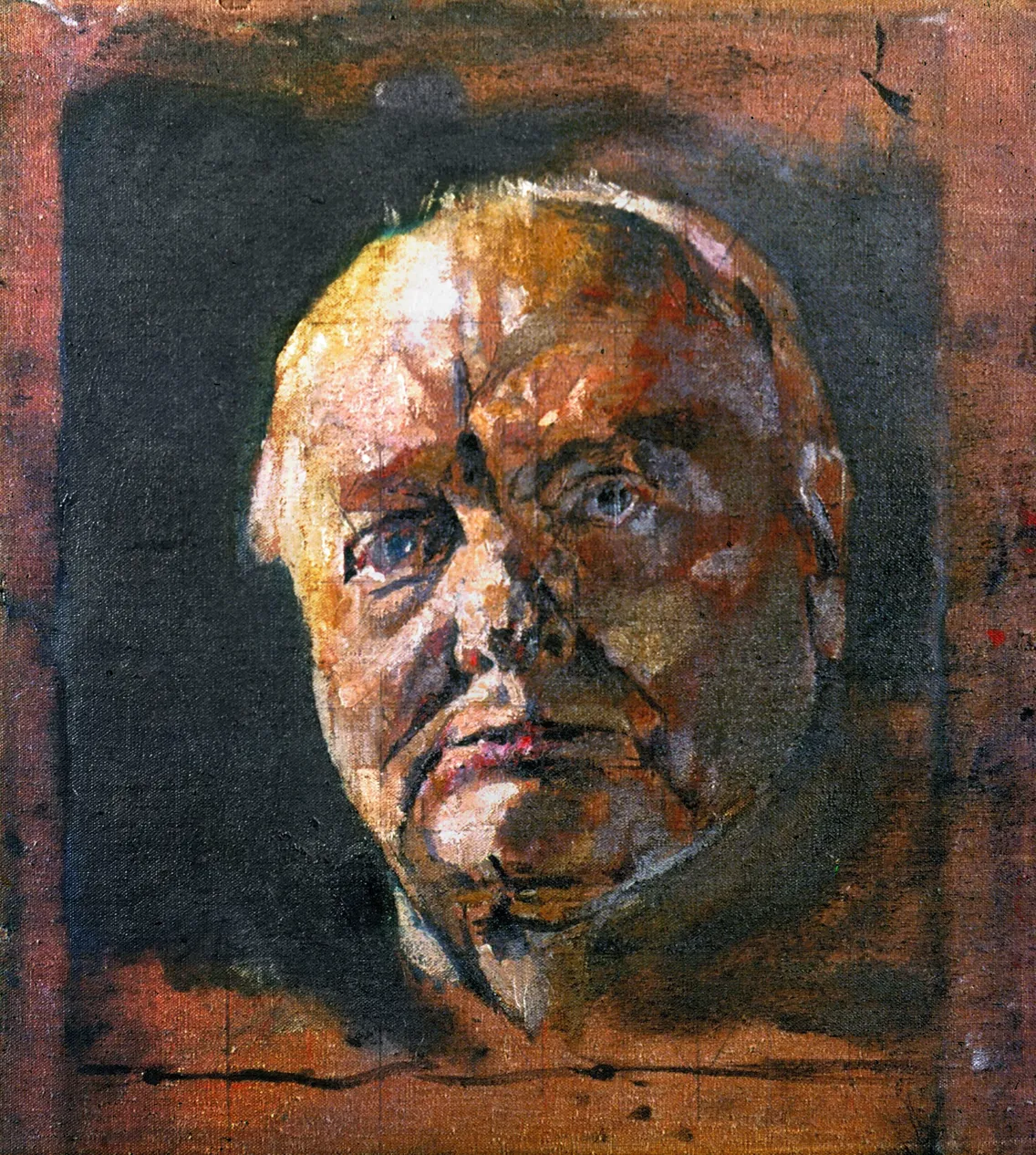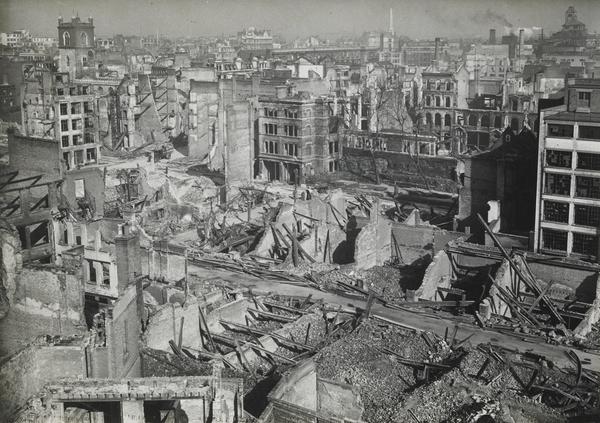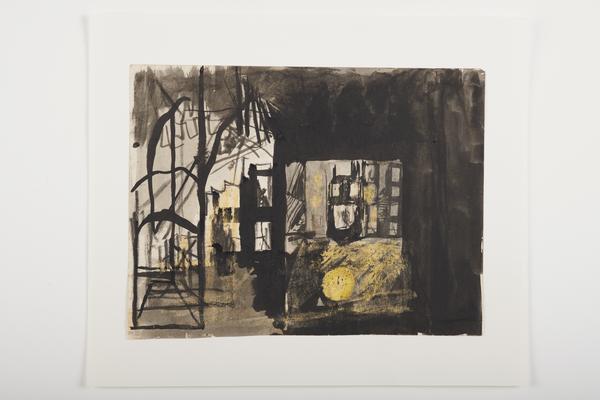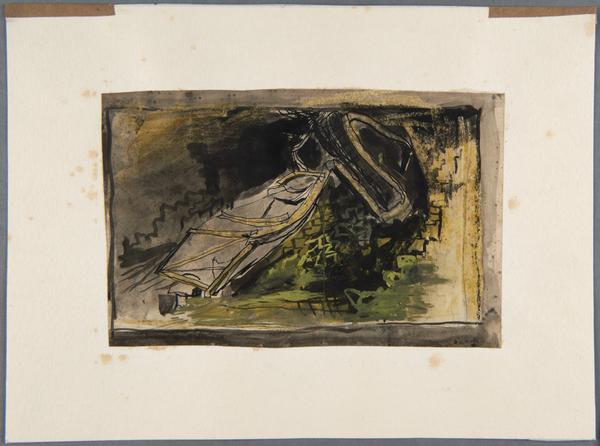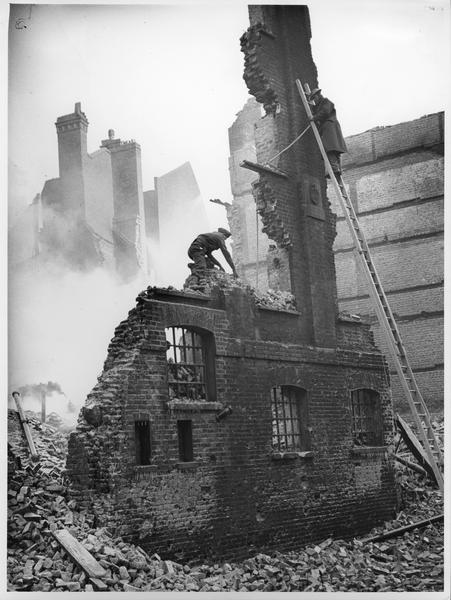Graham Sutherland’s eerie Blitz drawings
Graham Sutherland became an official war artist in 1940, producing stark drawings of bomb damage in the City of London and East End during the Blitz.
City of London & East End
1939–45

Part of Sutherland’s Devastation series, depicting London buildings damaged by German air raids.
Semi-abstract scenes of wreckage
Sutherland’s Devastation series shows the twisted wreckage left by German bombing of London during the Second World War (1939–1945).
Sutherland was one of the leading English painters of the mid-20th century. He’s best known for his unsettling landscapes, but also created a tapestry at Coventry Cathedral and a portrait of Winston Churchill.
The work he produced during the war is an eerie vision of destruction. Of what a bomb could do to the house next door, to a factory down the road. Of what Londoners were left to face after the sirens stopped.
“the windowless blocks were like sightless eyes”
Graham Sutherland
Becoming the artist
Sutherland was born in Streatham, south London in 1903. When he was 16, he became an apprentice engineer. But Sutherland wanted something different, and persuaded his father to let him become an artist.
Sutherland entered Goldsmith’s College of Art in 1921. While studying there, he specialised in etching, a print process which uses acid to cut a pattern into a metal print plate.
Sutherland was influenced by the 19th-century English painter Samuel Palmer, as well as modernist artists like Picasso and the surrealists. He began painting in the 1930s, and went on to produce brooding, visionary works based on the British landscape.
The Second World War
After Britain went to war in 1939, Sutherland became an official war artist. He was asked to make pictures of Cornish tin mines and damaged buildings in Manchester, Cardiff and London.
He made notes and sketches on the spot, then worked them up into finished drawings back in the studio. Recalling the bomb damage he saw, Sutherland said: “I will never forget those extraordinary first encounters: the silence, the absolute dead silence, except every now and then a thin tinkle of falling glass – a noise which reminded me of the music of Debussy.”

Sutherland's An Impression of Devastation at Moonlight.
Visions of wartime
Our collection includes watercolour drawings from Sutherland’s Devastation series, all depicting London buildings damaged by air raids.
These semi-abstract images capture the unsettling feeling of the familiar city landscape suddenly being unrecognisable. Buildings are torn open, their structures burnt, twisted and discoloured.
Here’s another description of what he saw: “Long terraces of houses remained: they were great – surprisingly wide – perspectives of destruction seeming to recede into infinity and the windowless blocks were like sightless eyes.”
Sutherland used distortion, colour and texture to create a tense, uneasy atmosphere.
In his drawing Panorama of Ruin, the large areas of green, purple, grey and black make you think of sickness and decay. Watercolour is added over wax crayon to create a scabby, damaged surface.
Coventry, Churchill and after the war
Sutherland was a convert to Roman Catholicism, and his experiences of human suffering during the war inspired him to make religious art in the late 1940s and 1950s. This included his design for a huge tapestry at the rebuilt Coventry Cathedral.
Sutherland painted more portraits during the 1950s and 1960s. The artist was invited to paint Winston Churchill for the war leader’s birthday in 1954. Churchill wasn’t happy with the result, claiming it made him look old and “half-witted”. Churchill’s wife, Clementine Churchill, asked for it to be destroyed.




